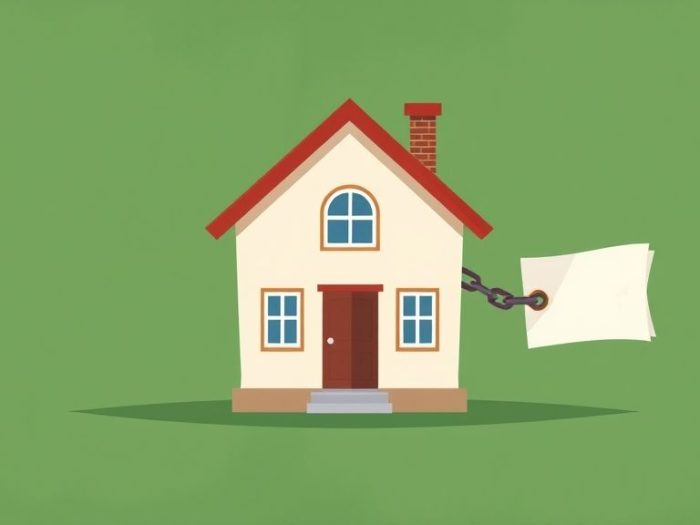The idea of owning your home outright is a dream for many, and paying off your
mortgage in 10 years can significantly accelerate your path to financial freedom.
While making extra payments is a common strategy, there are methods to achieve this
goal without increasing your monthly outlay. This article explores how to pay off
your mortgage in 10 years without making extra payments, focusing on refinancing
strategies.
Understanding Mortgage Amortization
Mortgage amortization is the process of paying off your mortgage over time through a
combination of principal and interest payments. In the early years, you pay more
interest than principal, and this gradually shifts over time.
Why Refinancing is Key
Refinancing your mortgage is the process of replacing your existing mortgage with a
new one, typically with different terms. This is the primary way to pay off your
mortgage faster without increasing your monthly payment.
Steps to Pay Off Your Mortgage in 10 Years (Without Extra Payments)
1. Assess Your Current Mortgage
Gather information about your existing mortgage:
- Current Balance: How much you still owe.
- Interest Rate: Your current interest rate.
- Loan Term: The original length of your mortgage (e.g., 30 years).
- Remaining Term: How many years you have left to pay.
- Monthly Payment: Your current principal and interest payment.
2. Determine Your Refinancing Goal
Your goal is to refinance into a loan with a term that will pay off your mortgage in
10 years.
3. Explore Refinancing Options
Shop around for lenders and compare refinancing options:
- Loan Terms: Look for 10-year or 15-year fixed-rate mortgages.
- Interest Rates: Compare interest rates from multiple lenders.
- Closing Costs: Factor in the costs associated with refinancing.
4. Calculate Affordability
Use a mortgage calculator to estimate the monthly payment of the new loan. Ensure
that it’s within your budget.
5. Consider Break-Even Point
Calculate the break-even point, which is how long it will take for your savings from
refinancing to offset the closing costs.
6. Apply for Refinancing
Submit your application to the lender with the best offer.
Example Scenario
Let’s say you have:
- Remaining Balance: $200,000
- Current Interest Rate: 4.5%
- Remaining Term: 25 years
You could refinance into a 10-year mortgage with a lower interest rate (e.g., 3.5%).
This would result in higher monthly payments but would pay off your mortgage in 10
years without needing to make extra payments.
Important Considerations
- Interest Rates: Refinancing is most effective when interest rates are lower than your current rate.
- Affordability: Ensure you can comfortably afford the higher monthly payments of a shorter-term loan.
- Closing Costs: Factor in closing costs, which can range from 2% to 5% of the loan amount.
- Break-Even Point: Calculate how long it will take to recoup your closing costs.
- Long-Term Goals: Consider your overall financial goals and whether refinancing aligns with them.
Alternatives
If refinancing isn’t feasible, consider these alternatives:
- Bi-Weekly Payments: Making half your monthly payment every two weeks can effectively result in one extra payment per year.
- Principal-Only Payments: Making extra payments specifically toward the principal balance.
Conclusion
Paying off your mortgage in 10 years without making extra payments is primarily
achieved through strategic refinancing. By carefully evaluating your options and
considering the associated costs, you can accelerate your path to homeownership and
financial freedom. Remember to consult with a financial advisor to determine the
best approach for your individual circumstances.
Related Keywords
Pay off mortgage in 10 years, refinance mortgage, accelerated mortgage payoff,
mortgage amortization, mortgage refinancing, 10-year mortgage, mortgage payoff
strategies, pay off mortgage faster, mortgage calculator, financial planning.
Frequently Asked Questions (FAQ)
1. Is it possible to pay off my mortgage in 10 years without extra payments?
Yes, primarily through refinancing your existing mortgage into a shorter-term loan.
2. What is mortgage amortization?
Mortgage amortization is the process of paying off your mortgage over time through a combination of principal and interest payments.
3. How does refinancing help pay off a mortgage faster?
Refinancing into a shorter-term loan (e.g., 10-year) accelerates the principal repayment, leading to a faster payoff.
4. What are the key steps in this strategy?
The key steps are assessing your current mortgage, determining your refinancing goal, exploring refinancing options, calculating affordability, considering the break-even point, and applying for refinancing.
5. What loan terms should I look for when refinancing?
Look for 10-year or 15-year fixed-rate mortgages.
6. Why is calculating affordability important?
Calculating affordability ensures that you can comfortably afford the higher monthly payments of a shorter-term loan.
7. What is the break-even point in refinancing?
The break-even point is the time it takes for your savings from refinancing to offset the closing costs.
8. Is this strategy always the best option?
No, it depends on factors like interest rates, your financial situation, and long-term financial goals.
9. What are some alternatives to refinancing?
Alternatives include bi-weekly payments and making principal-only payments.
10. Should I consult a financial advisor?
Consulting a financial advisor is recommended to determine the best approach for your individual circumstances.



